When it comes to strategy games, they can be intimidating. Often, players need to adjust to a different viewpoint (often top-down), as well as resource management and combat, which are not typically found in other genres. But the genre is filled with adventure, and Snapshot Games is embracing that with their latest title, Chip ‘n Claws vs The Brainioids. A blend of action-adventure third-person gameplay and strategy mechanics, this hyper-stylized title embraces comic books, science fiction, and vibrant environments to serve as the perfect gateway to the strategy genre.
We spoke with the CEO and founder of Snapshot Games, Julian Gollop, and Art Director Rossen Tzvetanov about Chip ‘n Claws vs The Brainioids. We discussed the importance of balancing complexity and fun, as well as how the Snapshot Games team approached welcoming genre newcomers and satisfying veterans, too.
To begin, I inquired about the developers’ approach to the game’s aesthetic. For strategy games, we usually think of the genre as something either hyperrealistic or entirely focused on war. Still, in Chip ‘n Claws vs The Brainioids, Snapshot Games has created a game that thrives on comic book visuals. The color palette is vibrant, and sci-fi movies like Mars Attacks clearly inspire character and creature designs.
When asked about how the developers chose this visual identity, Julian Gollop explained, “There is an assumption that strategy Games have to be very serious, very complicated, and have loads of nerd references and stuff like that. We’re trying to bring a bit of humour to the game in the way we portray these sorts of slightly silly robots that are invented by Chip.”
He continued, “Science fiction and the satire based on a dysfunctional organisation, because essentially aliens are portrayed as very, very evil things. But probably the sad reality is that they are, in fact, just dysfunctional corporate entities who are trying to exploit their workers and the resources and extract everything they possibly can. The satirical element and its retro-inspired feel as well. So we’re looking back at the sort of Mars Attack style of aliens and that kind of humor.”
Chip ‘N Claws vs The Brainioids embraces retro sci-fi and comic books.
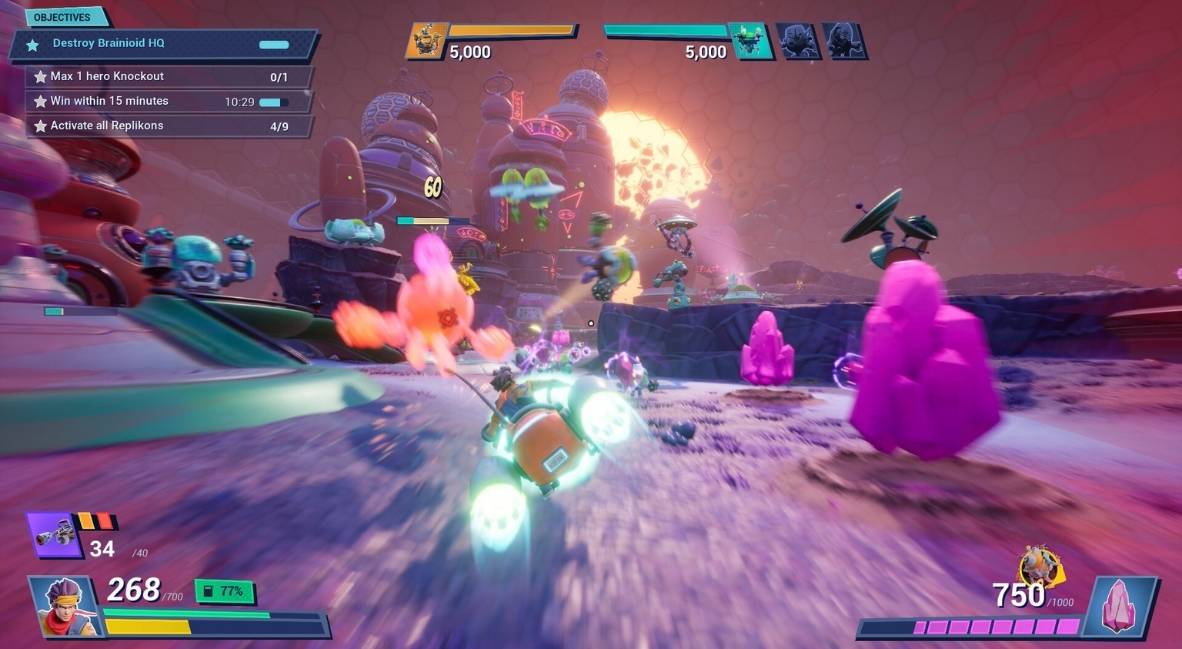
Art Director Rossen Tzvetanov added, “I think this time, in our case, it really helps us because we were looking for simplicity and readability of the battlefield and going for a stylized look without too much detail in the main picture. [The visual style] helps us to read what’s going on because sometimes it may be just mayhem on the battlefield with all kinds of minions and units and heroes, visual effects, and so on. And still, we really think it’s quite understandable [to see] what’s going on.”
“You’re able to control your army, and for the actual style, we went through all kinds of ideas on how we want to develop that. Since the beginning, readability has been the main thing. We wanted to have clear silhouettes of the minions because we don’t have that many classes of the minions, and we wanted all of them to be very easy to see. We’ve had the comic book feeling since the beginning, and we wanted to have slight jokes in the interface too,” he said.
An all-ages game, Chip ‘n Claws vs The Brainioids is easy to just jump into and play. It’s vibrant, friendly, and its looks familiar. All of that makes it accessible to new audiences. When asked about the game’s appeal to new players, Gollop explained that they had thought a lot about that particular element, especially when it comes to the game’s mechanics.
“The challenge that we set ourselves was how to [make the game accessible to new audiences] because we have a very long history of creating strategy games. Phoenix Point, for example, is a very complex and very deep turn-based strategy game. And [in Chip ‘n Claws] we are, we’re doing something very different,” Gollop explained.
“The challenge we set ourselves was how to make strategy more accessible to a wider audience and how to do it in a new way, so that if you’re a console player who’s used to playing third-person action games, you can immediately start playing it without having to learn some whole new paradigm about how to control the game. The basic controls are very standard third-person action controls, but obviously, on top of that, we built the ‘command layer.’ So you have a little command view, and you can survey the battlefield, issue orders to your minions, and you can see most of the battlefield, so everything is clear and laid out.
“Then we have, of course, the sort of underlying economy of the game, which obviously, in many real-time strategy games, is pretty fundamental. For our game, what we did here is a little bit simpler. So you, as a hero, can place the buildings, and they pop up. You always suspend your brain and use its resources. The placement is a quite important part of the strategy, but basically doing it is very simple. You directly move there and start playing.”
Co-op was always at the forefront for Snapshot Games.
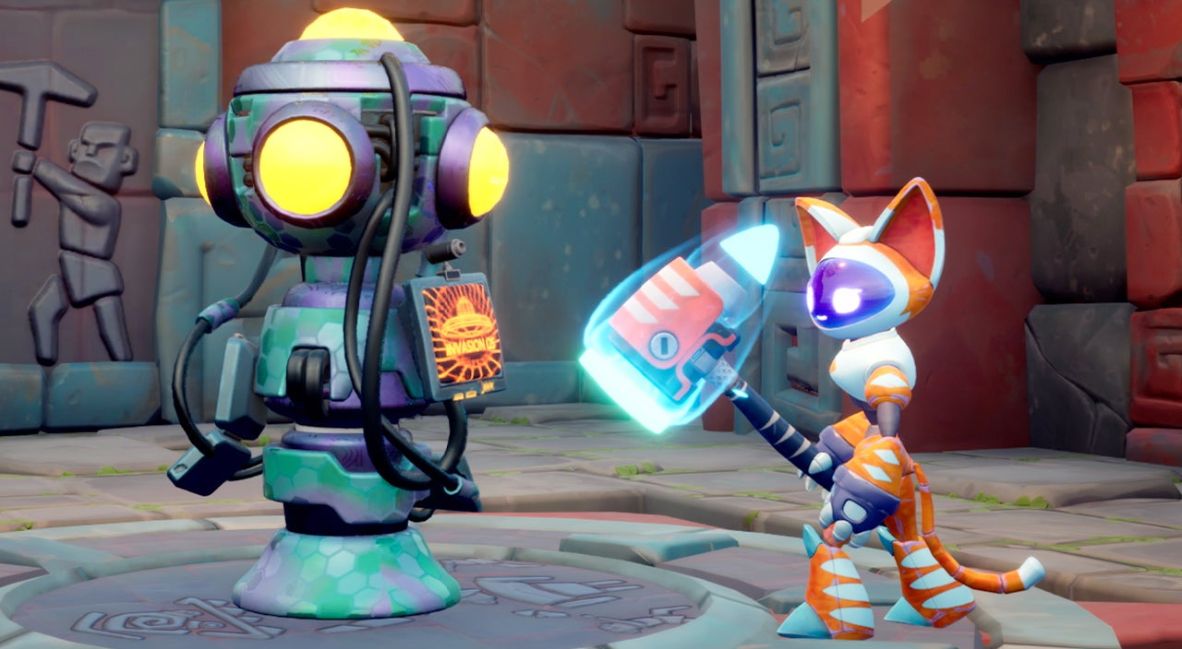
Gollop continued to explain how the team at Snapshot Games simplified and made complex systems more direct, “As you know, with any strategy game, you have to think about what your opponent is doing, what the optimal places is to attack or defend. [You think about] how to capture the resources and deny them to your opponent. So all these factors, which are very traditional strategy [elements] are absolutely relevant to Chip ‘n Claws. It is streamlined to to an extent because of limited controller inputs.”
But Gollop didn’t stop there, he continued to explain the challenges that come with developing a strategy game for console players. “You set this limitation as designers that you only have controller inputs to control everything. How do you make that work without it becoming a very complicated combo button nightmare? Which we obviously wanted to avoid.”
Cradting the single player expeirence was difficult enough, but Snapshot Games also had to develop systems that workd seemlessly in split-screen and online co-op as well. “For co-op,” Gollop started, “[that mode] is becoming a bigger and bigger thing now, especially with co-op only games like It Takes Two for example. And they sort of pioneered having a massively popular game that you can only play Co-op. So this is a new thing, really, in a sense.”
Even with its novelty, co-op was always central to designing Chip ‘n Claws vs The Brainioids, especially given the game’s protagonists. “Co-op does obviously place some constraints on us,” Gollop said. “In the single-player mode you can switch between the two characters and in co-op you’re both in the battle at the same time. So obviously, this plays differently. And there are two challenges. So the challenges are slightly different.”
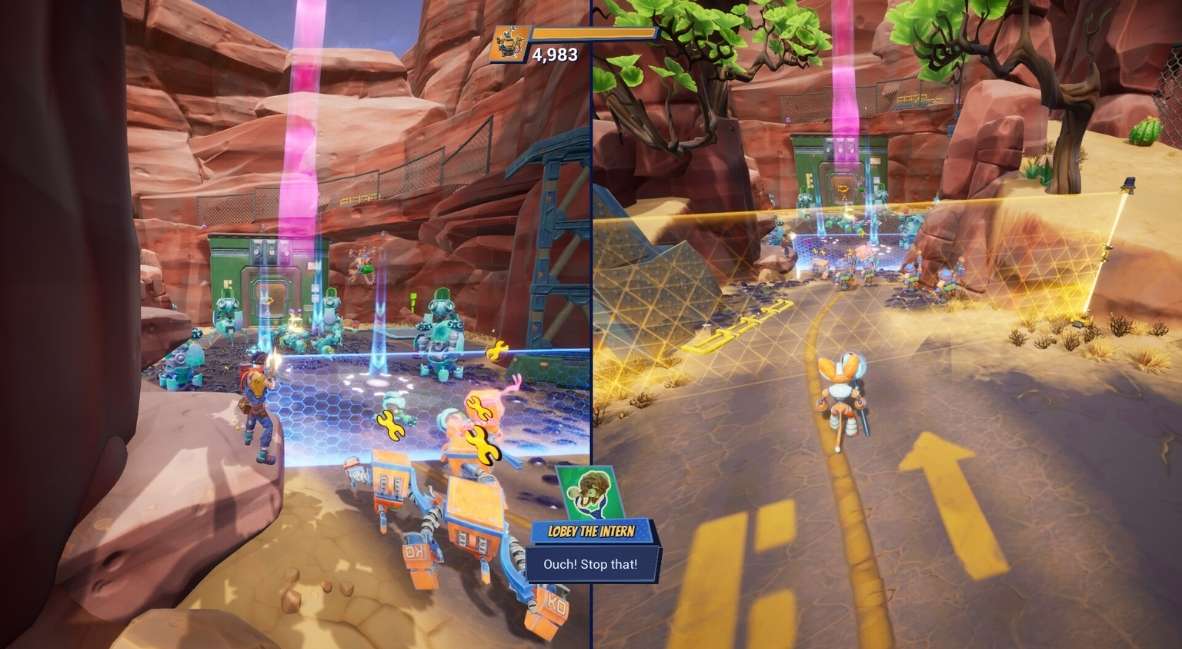
“So if you’re a single player, the challenge is that you may not be playing with the right character at the right time to do the optional thing. So you don’t have to switch your character. It’s fairly easy to do, but to use the abilities of different characters, you’ll have to switch between them,” he explained.
Gollop continued his explanation, “Co-op players have a different challenge. So both characters are in the map, all the abilities of the characters are available. But your additional challenge here is that you do have to cooperate [in order] to benefit properly.”
Chip ‘n Claws vs The Brainioids also features a difficulty modifier so that the game doesn’t become too easy when you’re playing with someon else. But, it’s the splitscreen component that Gollop wanted to highlight, even with the UI hiccups it caused during development.
“In our case, we have split screen, so especially if you are playing on a console at home on the couch, you can have a genuine couch co-op experience over split screen. That was our approach. We knew Co-op was probably the most fun part, but we knew most people in reality you’d probably play a single player, and we had to kind of balance the game for both really. However, there are also other benefits, such as a split screen feature,” Gollop explained.
Rossen Tzvetanov tackled adding in the perspective not just from inputs, but in terms of creating a UI (user interface) that did what it needed to do for tha game’s strategy systems but also didn’t overwhelm the player. “Split-screen UI was really, really hard. We still wanted to keep it as simple as possible. As Julian mentioned, Phoenix Point was a super heavy strategy game. We hit tons of things from the UI, and we really wanted to make [Chip ‘n Claws] UI more enjoyable and not so crowded.”
He continued, “At the end I think we managed to to unify some of the some of the things because we have bosses, we have the enemy HQ’s when players are fighting and so on and we managed to unify some of the elements so both of them can. See one bar for the post, for example, but still we have some weapon gauges and so on that need to be visible.”
The mechanics and world are one thing, but the real draw for the game is its titular characters: Chip annd Claws. When we asked about how the dynamic duo came to be, both Gollop and Tzvetanov laughed, with the latter saying “A world of iterations,” with a smile. Gollop explained that they knew that they were going to have a boy character who would an inventor, but that they didn’t know what he would look like, and the same thing applied to his robot cat companion Claws as well.
Getting to the final concepts for Chip and Claws took many iterations, but both characters make each other better.
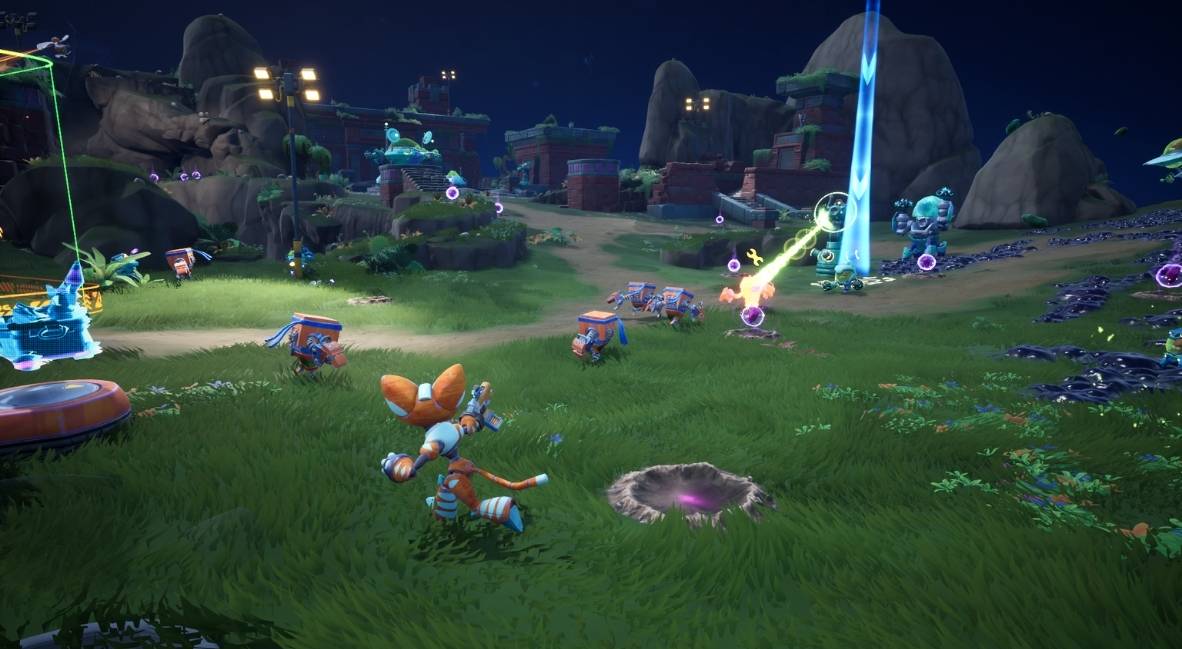
Rossen Tzvetanov started explainig the process in developing the character designs, “At first, the boy was super crazy. He had this punk-style hairstyle and was super tall with very thin legs. Then we decided ‘it’s too crazy.’ To tone him down, we went to something much, much more generic and Disney-looking, Pixar-looking. But it didn’t click.” Gollop interjected, “He was too bland. He needed a bit of attitude, and he didn’t have it. That was the problem.”
Tzvetanov responded with a smile, “Yeah, no attitude at all! Everyone on the team was complaining that this is not the character, that he’s not cool, and so on. So we started the process of redesigning him. We went again for several iterations. We knew that [Chip] was building robots, and so we went for the mechanic look. He was a kind of grease monkey style, a lot of oil spots on him. And at the end I think we have Chip!”
He continued, “And for the cat robot, well, before the cat robot, we actually had a newish looking dog at some point. Again, we had a lot of iterations. Instead of legs, we hit it on wheels at some point too,” Tzvetanov laughed with Gollop, recounting the past iterations of the game’s main characters.
But it’s not just about how the characters that are endearing. “Chip ends up being the favorite character by for most people, but you know, the banter between [him and Claws] is really great. But I think the real stars of the show are the robots in my view,” Gollop added.
“The [robots] are also humorous and very funny. And the, you know, Chip is supposed to be the inventor of the robots and the maker of Claws, the cat. And so Claws is another one of Chip’s robot inventions, but also his best pal. Even all the buildings have this character to them, which reflects what the menus are. Tthe melee character is essentially a boxer wearing boxing gloves,” Gollop explained.
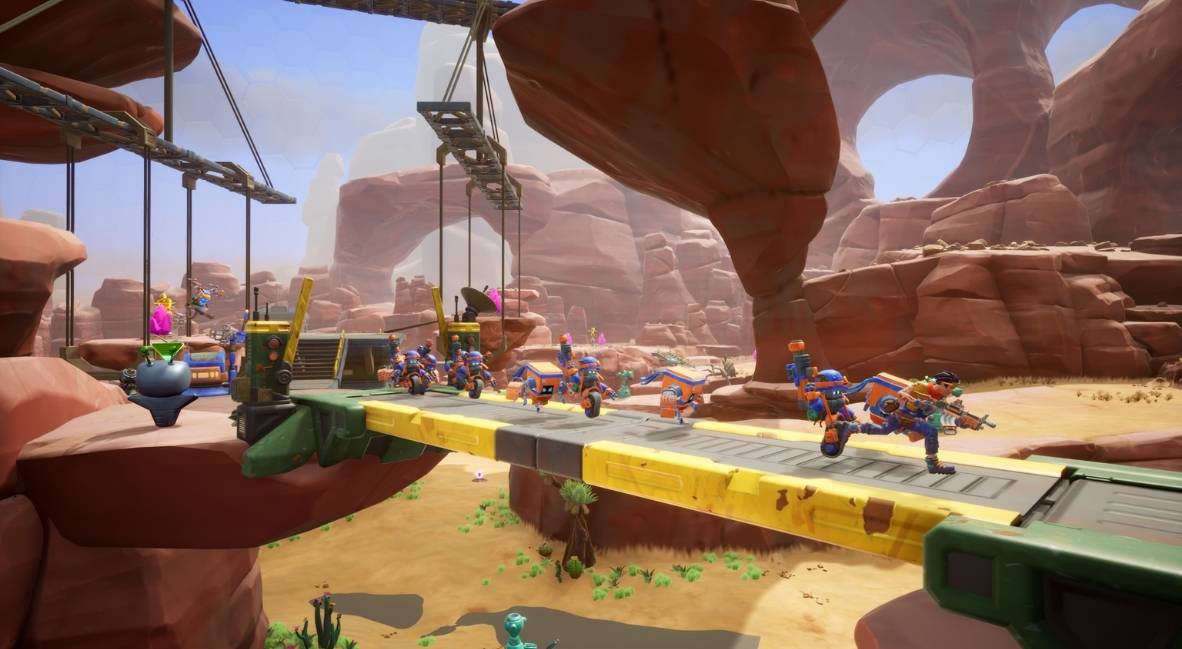
He continued, “For the aliens, we had a bit more of a challenge in making them interesting. So their brains are in jars. At one point, we had the idea that sometimes the brain would fall out of the jars and you can go and squash them with your feet,” we all laughed. “Which actually gives you some branium resources and other benefits. So it became part of a mechanic in the game as well, rather than just an aesthetic.”
Rossen Tzvetanov added, “Again, with a lot of iterations and obvious to hit so many ideas, games, and so many mechanics went through. So whenever something changed, we had to change the visuals. We had a lot of ideas for the final boss, even though he was huge! This guy was a huge giant tentacle monster at one point, which was just that as big as the map. He was just a floating hit [box] at some point. We were constantly working with game design and level design. We were testing everything, every boss idea together with the programmers, and when something worked, we just kept it.”
But visuals are just on epart of the characters, the rest, well, that’s storytelling. Julian Gollop exaplined, “We designed the characters from a very simple story to start with: Chip is an inventor, and he’s made these robots.
Earth has already been invaded once by the Brainioids, and Chip knows about them, and he knows how to access their little graph spheres that he built to steal all the Brainium from Earth.”
“Basically, the story is about the relationship between Chip and Claws [and their] journey,” Gollop started explaining, “A lot of the humour here is with [the characters’] banter when they’re talking with each other. Chip is kind of arrogant, but he gets a lot of things wrong and Claws has to keep correcting him and making sure he’s on the right path. So, they have this relationship that is slightly antagonistic, but you know they’re trying to do the same thing.”
“[Chip and Claws] are trying to get to to stop the Brainioids from stealing all the brains from Earth. So, it’s a really simple story, but it’s all about the characters and how they’re interacting with each other. It’s like a buddy story. They know that the Brainioids are obviously evil, but they’re a bit ridiculous and Chip is constantly making fun of them and Claws is also making fun of Chip. So [the banter] is really where we’re telling the stories about the relationship with those characters,” Gollop concluded.
Humor runs through everything in this co-op indie strategy title.
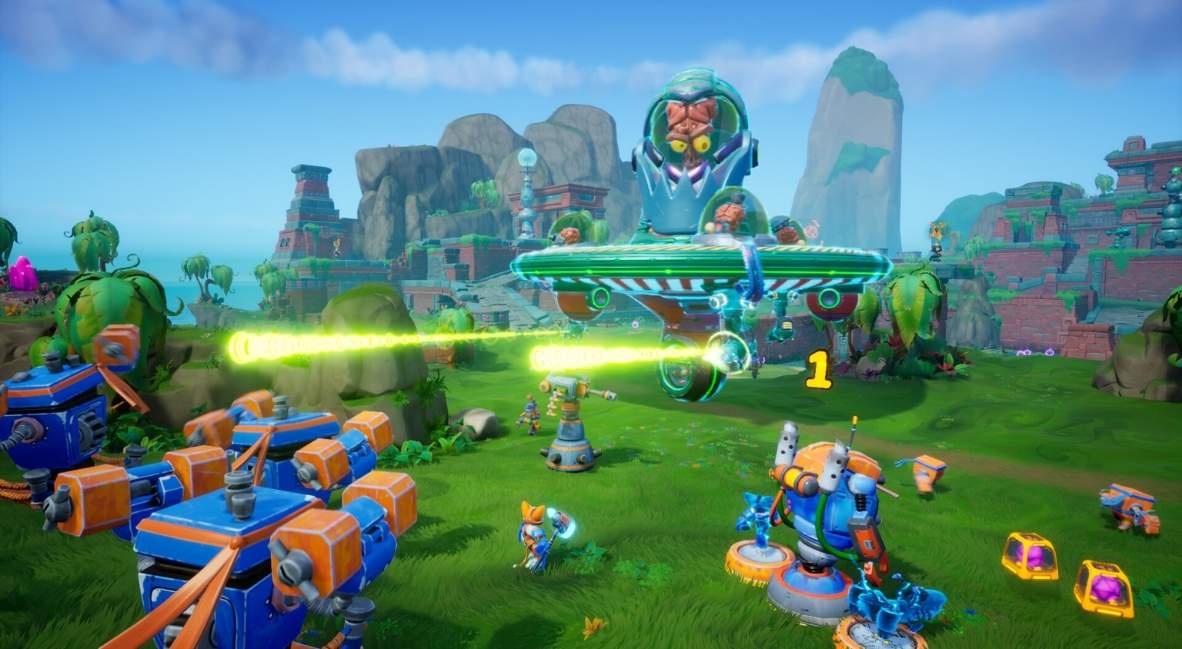
Talking with Gollop and Tzvetanov, it was clear how much joy they found in Chip ‘n Claws vs The Bainiods. So I asked the developers what they learned through this game’s development cylce. And their answer was heartwarming to say the least.
“That game development can actually be fun instead of really hard work,” Gollop said, letting out a laugh. “Yeah, it’s probably the most fun project I’ve worked on, actually, even though, you know, we had. Some difficulties with it early on but I think, it ended up being a very fun project to work on. That was the main thing that we had as a team, a sense of fun that we tried to keep within the team. So we were constantly playing the game with each other. Co-op, multiplayer, everything, it was enormous fun. So yeah, that’s what I learned. Actually, game development can be fun!”
As for Rossen Tzvetanov, “For myself, it was actually doing stylized start because as I said [I worked on] Assassin’s Creed, The Division, Phoenix Point, everything was super realistic, and doing this stuff is just like Julian said, it was really fun.”Gollop added, “Yeah, it’s very different from what you’re used to in Ubisoft.” To which Tzvetanov responed, “[Stylized art is] challenging because [you have] to show something with less it, and it can be quite difficult, but it’s really fun too.”
That sense of joy and fun is running through Chip ‘n Claws vs The Brainioids spades. From the art, to the mechanics, and the playful banter, its dificult to boot up the game and not just smile. And that’s what marks this chapter in Snapshot Games’ history. Joy.
Chip ‘n Clawz vs The Brainioids is available now on PC (Steam and Epic Games Store), PlayStation 5, and Xbox Series X|S.

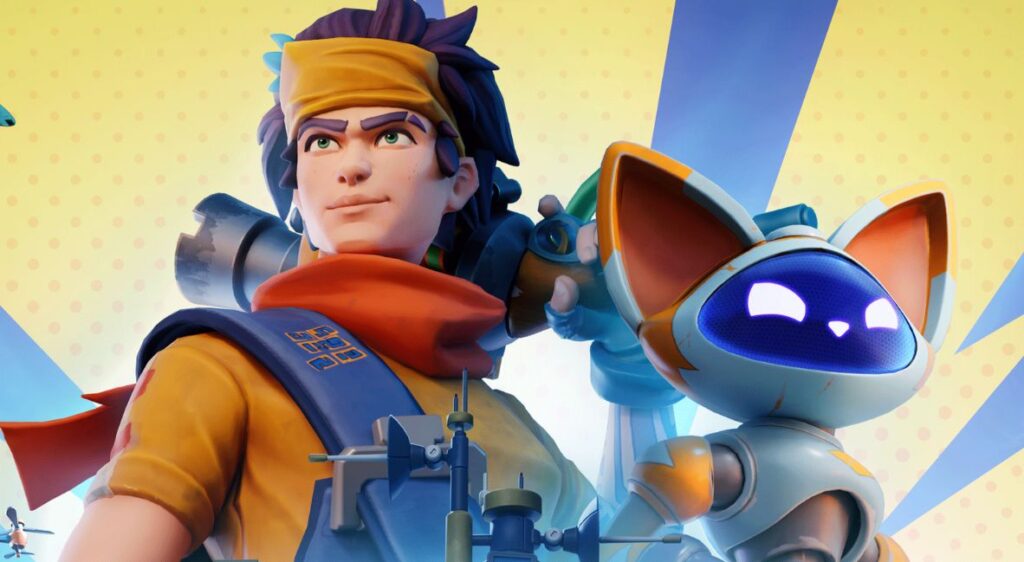
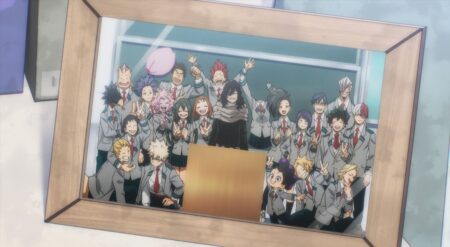
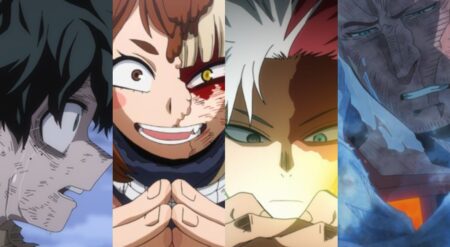
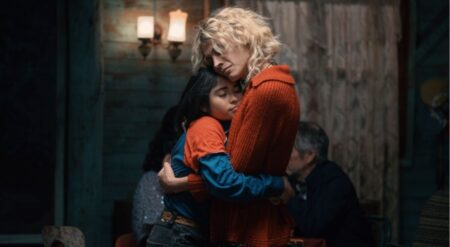
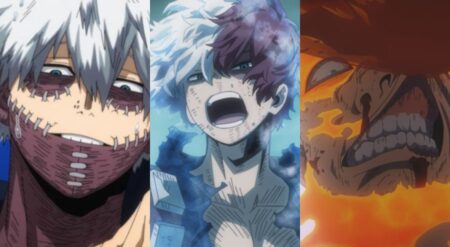
![[EXCLUSIVE] ‘Invincible VS’ Devs Dive Deep Into Their New Original Character: Ella Mental Ella Mental in Invincible VS](https://butwhytho.net/wp-content/uploads/2025/12/Invincible-VS-Ella-Mental-But-Why-Tho-1-450x247.jpg)